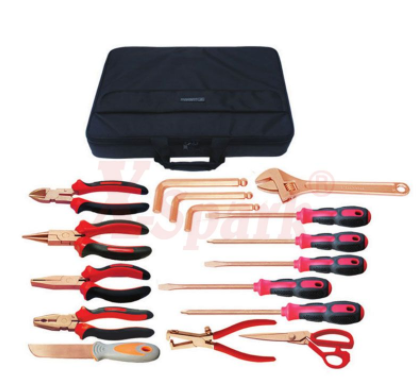Explosion proof equipment commands the use of robust materials and proactive builds to prevent unwanted ignitions of flammable substances in hazardous locations. Unlike mainstream equipment from your local hardware or electronics store, these cutting-edge units are designed to mitigate the creation of sparks through non-ferrous materials.
This article explores the different types of materials used for explosion proof equipment, as well as Division 1 and Division 2 designs that help such units prevent sparks (through isolation inside conduits or explosion proof enclosures) from interacting with flammable substances in the external, applicable environment.
Division 1 and Division 2 Explosion Proof Designs
Explosion proof equipment take on complex designs to prevent sparks from igniting combustible compounds outside of the enclosure or unit. Flammable substances are still allowed to enter such units, through non-gas tight entry points, covers and other small openings. Theoretically, it is impossible to stop the full penetration of gas. This is the principle that powers the design of explosion proof equipment; thus, the focus is not to prevent hazardous gas from entering the unit, but instead to prevent volatile interactions from escaping to the hazardous location. A proper flame path must be established to allow the gas to enter, pass and cool down before escaping the enclosure or unit. Flame paths for explosion proof equipment are usually long and narrow, prolonging the escape of the gas. This allows it to cool adequately as it exits the unit.
For explosion proof fans, non-sparking designs must be incorporated to reduce the creation of sparks during operation. This is achieved by using non-ferrous, non-sparking materials, such as aluminum, and minimizing contact between stationary and rotating components of the cooling unit (also known as Type A under AMCA Standard 99-0401 Classifications of Spark Resistant Construction). Type A fan designs rely on a cover over the fan shaft or a shaft that is made out of monel. Type B non-sparking designs for fans utilizes aluminum wheels and rub rings to prevent contact between stationary and moving parts. Type C offers the least amount of protection against sparks.
Type A and B designs are mostly applicable to Division 1 environments, where hazardous airstreams are known to exist in everyday operations. Type C may be more suitable for Division 2 environments, where hazardous airstreams are not normally present and may only surface during accidents or equipment failure.
Explosion Proof Materials (Non-sparking)
Electrical sparks are a primary source of ignition in many machines and tools around industrial facilities. To reduce the creation of sparks, explosion proof equipment is typically constructed of non-sparking materials. With this in mind, most non-ferrous metals used for explosion proof systems contain high thermal conductivity.
Copper-aluminum alloys, stainless steel, silver, aluminum and galvanized steel are examples of metals that are non-sparking. In addition to being non-sparking, the materials are also less prone to corrosion, allowing them to last longer and withstand exposure to corrosive agents, such as solvents and abrasive cleaning liquids, or atmospheres, including high levels of moisture and humidity. Non-sparking metals are usually not as strong as their spark-producing counterparts, such as iron. Because of this, they must be maintained properly and signs of deterioration should be proactively addressed through maintenance or replacement.
Non-metallic, non-sparking materials are also commonly used in explosion proof equipment. This includes plastics, wood, thermoplastic polymers, leather and etc. Such materials are mostly used to manufacture non-sparking tools – hammers, shovels and gloves. For explosion proof lighting systems, sturdy non-sparking polymers, such as polycarbonate or carbon fiber, may be used to prevent the creation of sparks.
Cold Sparks and Best Practicesa
Contrary to popular belief, non-sparking does not completely negate the creation of sparks. In some cases, such equipment can generate “cold sparks”. But since this type of spark, due to its low heat properties, cannot ignite carbon disulfide – a substance with the lowest ignition point – it is considered to be safe. Moreover, sparks generated by sudden impact or intense friction may also be produced by both sparking and non-sparking equipment. In order for this type of spark to become dangerous, the spark must be extremely hot and it must be present for a certain period of time – long enough to light up the flammable substance.
Observing best practices surrounding non-sparking explosion proof equipment can ensure their non-sparking features are well maintained. It is recommended for such devices to be stored away from ferrous materials and contaminants. Furthermore, the materials should not directly encounter acetylene, due to the possibility of forming volatile acetylides. The creation of this substance can be streamlined when moisture is present. Lastly, proper ventilation may prevent hazardous compounds from “pooling” or building up around non-sparking materials.
We are a Non-Sparking Tools supplier. Please feel free to contact us if you need them.

评论
发表评论